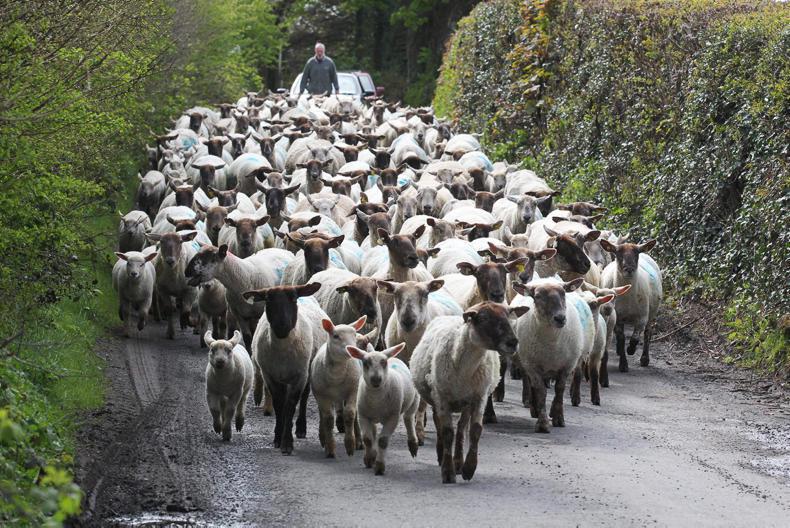The 2017 sheep kill hit a 10-year high, at a throughput of 2,845,513hd.
With a bigger national flock, it looks like high slaughter numbers will also be a feature of the trade in 2018.
Throughput in the early part of 2018 may not reach the highs of 2017, however, given that there were more than 90,000 extra lambs killed in the second half of 2017.
Farmers have completed the sheep census prior to 31 December and all signs point to numbers holding steady and possibly increasing slightly.
This is driven in part by mixed farmers in the areas worst affected by multiple years of bad weather deciding to focus on sheep over other enterprises.
An early spring is needed in 2018 more than in any other year given the fodder situation and higher costs currently faced.
On the market side, there are still many unanswered questions on Brexit.
Farmers both north and south of the border will be watching two key areas in particular.
The first is how trade talks affect the flow of lambs from Northern Ireland to southern plants for direct slaughter. The number of sheep imported for direct slaughter in 2017 reached 402,820, an important outlet for NI sheep farmers and supply source for ROI plants. The second is how the New Zealand EU tariff-free quota of about 270,000t will be split.
There are positive signs on gaining access to the US market for sheepmeat and this would be a welcome addition given that sheep output continues to grow.
Gaining greater access to Asian markets would also be a potential game-changer and sheep must not be pushed aside in trade talks on dairy and beef.
Read more
Outlook 2018: hoping for elusive combination of high yield and high price
Outlook 2018: optimism that dairy can add another good year
Outlook 2018: five things beef farmers need in 2018
The 2017 sheep kill hit a 10-year high, at a throughput of 2,845,513hd.
With a bigger national flock, it looks like high slaughter numbers will also be a feature of the trade in 2018.
Throughput in the early part of 2018 may not reach the highs of 2017, however, given that there were more than 90,000 extra lambs killed in the second half of 2017.
Farmers have completed the sheep census prior to 31 December and all signs point to numbers holding steady and possibly increasing slightly.
This is driven in part by mixed farmers in the areas worst affected by multiple years of bad weather deciding to focus on sheep over other enterprises.
An early spring is needed in 2018 more than in any other year given the fodder situation and higher costs currently faced.
On the market side, there are still many unanswered questions on Brexit.
Farmers both north and south of the border will be watching two key areas in particular.
The first is how trade talks affect the flow of lambs from Northern Ireland to southern plants for direct slaughter. The number of sheep imported for direct slaughter in 2017 reached 402,820, an important outlet for NI sheep farmers and supply source for ROI plants. The second is how the New Zealand EU tariff-free quota of about 270,000t will be split.
There are positive signs on gaining access to the US market for sheepmeat and this would be a welcome addition given that sheep output continues to grow.
Gaining greater access to Asian markets would also be a potential game-changer and sheep must not be pushed aside in trade talks on dairy and beef.
Read more
Outlook 2018: hoping for elusive combination of high yield and high price
Outlook 2018: optimism that dairy can add another good year
Outlook 2018: five things beef farmers need in 2018






 This is a subscriber-only article
This is a subscriber-only article










SHARING OPTIONS: